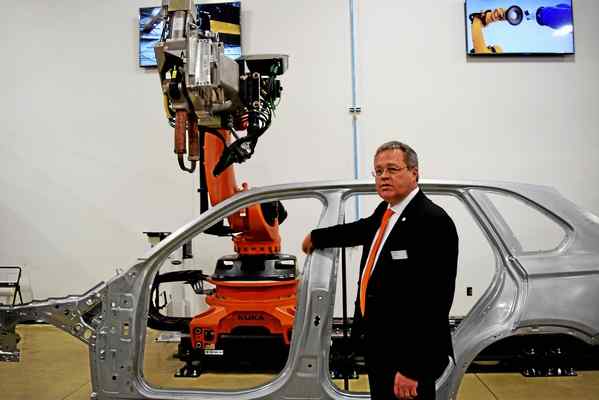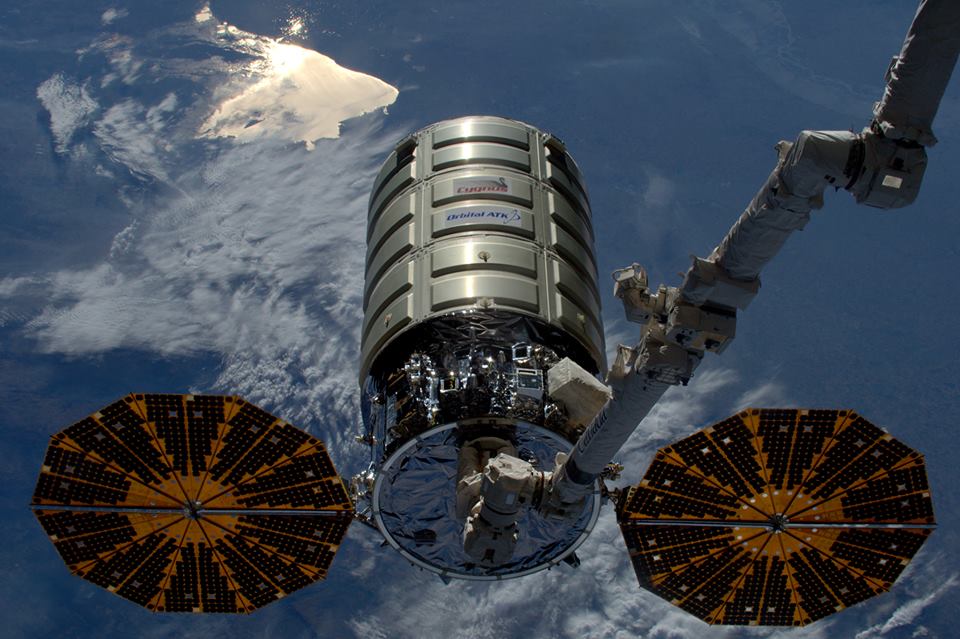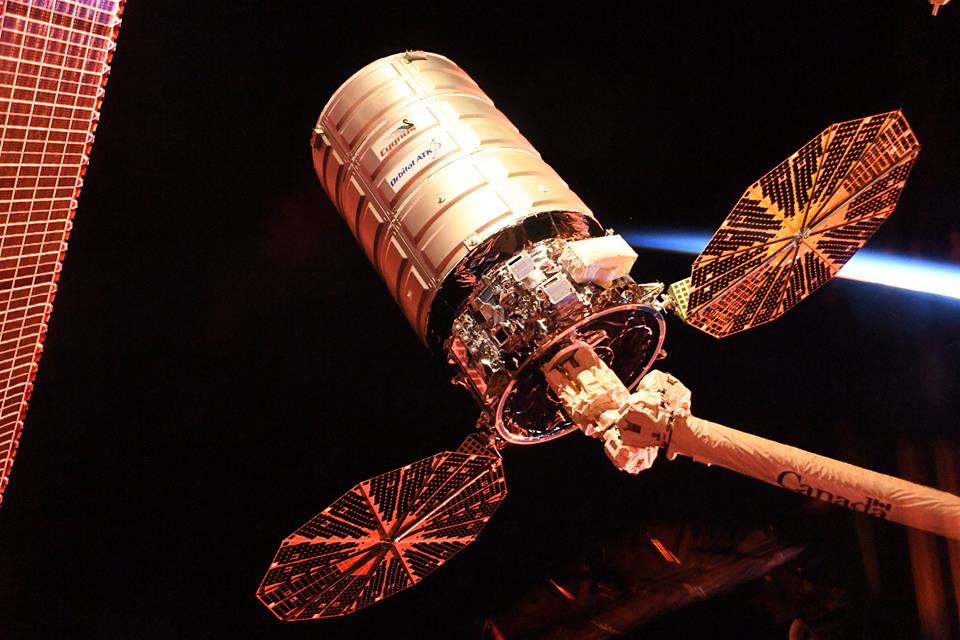What's New In Robotics This Week - Dec 05

Posted on Dec 08, 2017 7:00 AM. 13 min read time
-Manufacturing & Cobot Roundup
-China To Create 'Robot Moon Station'
-Seaglider Fleet Maps Antarctic Ice Shelf
-Bot 'Sees Into Future'
-And much more...
Manufacturing & Cobot Roundup
Rice University researchers have developed an algorithm that allows the trajectory of cobot arms to be modified in real-time with "just a little push."
This discovery allows users to change the direction of a cobot arm while it is in motion and, instead of returning to its original trajectory, the arm adapts its path to the human input.
Engadget reports:
"The paradigm shift in this work is that instead of treating a human as a random disturbance, the robot should treat the human as a rational being who has a reason to interact and is trying to convey something important," [graduate student Dylan] Losey said in a statement. "The robot shouldn't just try to get out of the way. It should learn what's going on and do its job better."
Check out this KUKA cobot in action alongside a human colleague...
The BBC examined why South Korea is an "ideal breeding ground for robots."
Chinese manufacturing may not be moving to Africa "all that soon" because Chinese employers are reacting to increased wages by introducing automation, says Quartz.
VTT Finland profiled its work leading the European Commission-supported L4MS (Logistics for Manufacturing SMEs) initiative:
L4MS is focused on providing inexpensive and flexible logistics automation for SMEs, which requires no infrastructure change, no production downtime and no special expertise. "The deployment cost and time of mobile robots will reduce by a factor of 10. It will give never before seen flexibility and agility to SMEs for small batch production and will double their productivity", says the Coordinator of L4MS Ali Muhammad at VTT.
"Ask not what tech can do for you, but what you and tech can do together for people,"advises TransUnion Africa CEO Lee Naik in 'Becoming one with the machines.'
Bloomberg looked at some Chinese investments in Canadian robotics and AI companies:
“Over the last six months, I’ve probably been contacted by at least half a dozen new funds that have Chinese money,” said Janet Bannister, partner at Toronto-based Real Ventures. The venture capital firm said last week it raised C$180 million ($142 million) in fresh funds for new Canadian startups, including an undisclosed amount from Shenzhen-based Tencent.
KUKA unveiled its new Metal & Arc Tech Center in Detroit.
 Caption: Jerry Osborn, president of KUKA Robotics Corporation in Shelby Township during the center’s grand opening.
Caption: Jerry Osborn, president of KUKA Robotics Corporation in Shelby Township during the center’s grand opening.
The heavy duty industrial robot market is set to grow at a 7.71% CAGR between 2017 and 2021, according to a new report. Relations between India and Japan could be transformed through robots, says Livemint.
Fleet Owners profiled some of the bots --including cobots-- that are used to shave time off warehousing operations.
Warehouse cobot maker Fetch Robotics announced that it has raised US$25m in Series B funding, which was led by Sway Ventures in San Francisco and included existing investors O’Reilly AlphaTech Ventures, Shasta Ventures and SoftBank’s SB Group US, Forbes reported:
Fetch founder and Chief Executive Melonee Wise said in an interview that the company is seeing accelerating demand from e-commerce, whose continued growth is requiring more distribution centers. But they're facing a huge shortage of people to staff them. Fetch is also getting interest from "Tier 1" automakers, which like the ability of Fetch's robots to detect and track the location of parts "to avoid losing transmissions," she said.
Frank Tobe's breakdown of February's fundings, acquisitions, and IPOs was published on Robohub.
Slovenian metalworking company OKK is using a robot from FANUC to facilitate cycle time reduction...
Asian Robotics Review investigated some of the privacy concerns around robotics, and asked: 'After we endow robots with human-like senses, what will they know about their human workmates…and how will that knowledge be used?'
TechCrunch profiled startup Wandlebots, which is developing an exoskeleton-type system for programming robots:
Its first product is a sensor-laden suit that a person can wear to demonstrate actions so that a robot can then replicate what they do. Basically, it’s a system through which robots can “learn” what they need to without requiring that the person “teaching” them be an experienced robotics programmer.
The firm expects its system to be commercially available by the end of 2018.
China To Create 'Robot Moon Station'
China has plans to create a sustainable automated moon station according to space officials quoted in state media. The first launch involving a carrier rocket with a 100-ton-plus payload is scheduled to take place in 2030.
China has delivered robotic rovers to the lunar surface (see video below), but the proposed project is much more ambitious.
Via Indian Express:
The station could slash the costs of returning rock samples to Earth, said Jiao Weixin, a Peking University space science professor. A sustainable robot station would enhance lunar geography studies and “have better energy efficiency than lunar rovers as the station can deploy a much bigger solar power-generator,” he said.
 Caption: China could begin construction of the base as soon as 2030. ((Via: NDTV.)
Caption: China could begin construction of the base as soon as 2030. ((Via: NDTV.)
In other space bot news, Space.com profiled the Mars 2020 Rover (dubbing it 'Curiosity 2.0' due to the similiarites in design) and the International Space Station's Canadarm2 was in action, handling and detaching the Cygnus cargo spacecraft. Canadarm2 set the scene for some stunning pictures in the process.
 Photo Credit: NASA.
Photo Credit: NASA.
 Captured at the moment of sunrise, Cygnus foreshadows its own Viking funeral when it enters Earth’s atmosphere.
Captured at the moment of sunrise, Cygnus foreshadows its own Viking funeral when it enters Earth’s atmosphere.
Photo & Caption: NASA Astronaut Randy "Komrade" Bresnik
And Jose Benavides, who leads the team at NASA's Synchronized Position Hold, Engage, Reorient Experimental Satellites (SPHERES) and Astrobee Facility spoke about the next generation of free-flying space robots as part of the Google Talks series...
Seaglider AUV Fleet Maps Antarctic
Back on planet earth, which has a few extreme environments of its own, a flotilla of robot submarines has embarked on a dangerous mission to map the bottom of an Antarctic ice shelf.
Via Scientific American:
 Caption: The Seagliders are expected to explore the area for a year. Credit: University of Washington
Caption: The Seagliders are expected to explore the area for a year. Credit: University of Washington
This month a fleet of seven underwater robots developed by the University of Washington (U.W.) in Seattle is heading into this world on a risky yearlong mission. Their goal: help forecast sea level rises by observing the melting process in this hidden topsy-turvy world, where layers of warm and cool water mix at the shelf. Because the complex physics in this unique region are poorly understood, scientists have been unable to make good predictions about the ice shelves’ future on a scale of tens of years, which is what will affect humans living near the ocean today.
Elsewhere, The Daily Beast reported that the search for missing Malaysia Airlines Flight 370 will resume in January, using robots made by Texas firm Ocean Infinity. And The Latin American Herald Tribune reported that Argentina plans to use robotic undersea search vehicles provided by Russia and the US in the continued search for the ARA San Juan, the Argentine navy submarine that disappeared with 44 crewmembers on board more than two weeks ago. The robots are expected to arrive in the South Atlantic by the weekend.
Bot 'Sees Into Future'
Researchers at UC Berkeley have developed a "robotic learning technology that enables robots to imagine the future of their actions so they can figure out how to manipulate objects they have never encountered before."
Berkeley News reports on the unsupervised learning system:
Using this technology, called visual foresight, the robots can predict what their cameras will see if they perform a particular sequence of movements. These robotic imaginations are still relatively simple for now – predictions made only several seconds into the future – but they are enough for the robot to figure out how to move objects around on a table without disturbing obstacles. Crucially, the robot can learn to perform these tasks without any help from humans or prior knowledge about physics, its environment or what the objects are.
Separately, IEEE Spectrum reported on a new AI that's able to predict the outcome of organic chemical reactions --a development that could reduce the time it takes to develop new drugs:
Instead, researchers at IBM took the kind of AI program normally used to translate languages and applied it toward organic chemistry. "Instead of translating English into German or Chinese, we had the same artificial intelligence technology look at hundreds of thousands or millions of chemical reactions and had it learn the basic structure of the 'language' of organic chemistry, and then had it try to predict the outcomes of possible organic chemical reactions," says study co-author Teodoro Laino at IBM Research in Zurich.
See also: 'Yibiao Zhao Is Giving Machines a Sense of Imagination,' in MIT Technology Review.
I can't see into the future, but I'm pretty sure I'll be back next week with more news from the world of robotics. Until then, hope you enjoy these videos and links!
Britain lays out a road map to power the new industrial revolution (The Telegraph)
The Tiny Robots About to Revolutionize Disaster Rescue (Outside)
Is That a Bug or a Robotic Spy? (Robotics Tomorrow)
10 Interesting Chinese Robotic Startups (Nanalyze)
You'll see a whole bunch of people wearing robots at work in 2018 (ZDNet)
Intel Sees Opportunity At Every Layer Of The Robot Car Economy (Forbes)
Enter The Wonderful World Of Competitive Mouse Maze Speed Trials (Nerdist)
Yamaha to show robot rider at CES that will challenge Valentino Rossi (Motor Authority)
Milford company wants to help regional manufacturers automate (Sioux City Journal)
Nissan to test ‘robot taxis’ in March, eyeing official launch in early 2020s (The Japan Times)
South Korea will have 85 robot volunteers at the Winter Olympics, including a robot torch bearer (Business Insider Singapore)



Leave a comment